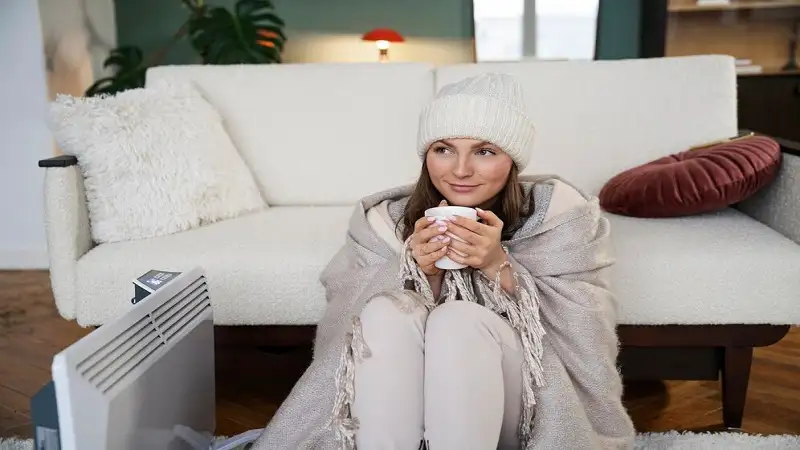There’s nothing more frustrating than turning on the air conditioning, expecting a cool, refreshing space — and still feeling like you’re baking. If your AC is running but your home stays uncomfortably warm, you’re not alone. Many people assume their cooling system is the problem, but often, the issue lies elsewhere.
One of the most overlooked factors that impact your home’s indoor temperature? Sunlight pouring through your windows. In places with intense sun exposure, like Sydney, even the most powerful AC unit can struggle to compete without a little help. That’s why many homeowners turn to blinds Sydney suppliers for a practical and stylish solution to indoor heat.
But window coverings are just one piece of the puzzle. Let’s break down what might actually be keeping your home hot — and what you can do about it.
1. Your Home’s Insulation Isn’t Pulling Its Weight
Air conditioning can only do so much if your house is letting heat sneak in (or cold air leak out). If your home isn’t properly insulated — particularly in the roof and walls — it’s like running the AC with the windows open.
Signs of poor insulation include:
- Hot spots in specific rooms
- AC struggling to maintain a consistent temperature
- High energy bills without obvious reasons
Insulating your ceiling, sealing gaps around windows and doors, and using thermal curtains or blinds can make a noticeable difference.
2. Windows Are Letting in More Heat Than You Think
Glass might look harmless, but untreated windows can act like magnifying glasses, pulling heat into your home all day. Sun-facing windows — especially those on the west side — are often the worst offenders.
To reduce solar gain:
- Install reflective or blockout blinds or shades
- Consider window films to reduce UV and heat transmission
- Close curtains or blinds during peak sunlight hours
- Add awnings or outdoor shading options to reduce direct exposure
Even if you love natural light, a strategic setup (like sheer curtains layered under blockout blinds) can help balance brightness and temperature.
3. Your AC Might Be Undersized (or In Need of Help)
It’s easy to assume your air conditioner should cool your entire home effortlessly. But if the unit isn’t sized correctly for your space, or if it’s older and less efficient, it might be working overtime with little result.
Common AC issues include:
- Dirty filters restricting airflow
- Leaky ductwork wasting cooled air
- Incorrect thermostat placement
- Refrigerant levels being too low
If your AC runs constantly without cooling effectively, it’s worth having a technician do a quick health check. Sometimes a simple clean or maintenance call can restore its efficiency.
4. Ceiling Fans Aren’t Being Used Strategically
Ceiling fans don’t cool air, but they do help circulate it — and that can make a room feel significantly cooler. In summer, your fans should rotate counterclockwise to push air downward, creating a cooling breeze.
Used in combination with air conditioning, fans allow you to raise the thermostat a few degrees without sacrificing comfort. That means less energy usage and more evenly distributed cool air.
5. Hot Appliances Are Heating You Up
Believe it or not, the devices you use every day could be contributing to the warmth in your home. Cooking, using the oven, running the dryer, or even charging electronics can add heat to your living space — especially if you’re doing it during the hottest part of the day.
Tips to reduce appliance heat impact:
- Cook earlier or later in the day
- Use a microwave, air fryer, or BBQ instead of the oven
- Run heat-generating appliances at night when temperatures are cooler
- Switch to energy-efficient lightbulbs, which give off less heat
6. Your Home Holds Onto Heat
Some building materials, like brick or concrete, absorb heat throughout the day and release it slowly over time — even after the sun sets. This means your AC is battling not just outside heat, but stored heat inside your walls and floors.
Ways to reduce heat retention:
- Use rugs or carpets on tile or concrete floors
- Add shade to exterior walls with plants or shade sails
- Ventilate in the evening to let hot air escape
- Invest in passive cooling design features (if renovating or building)
A Few Quick Fixes That Actually Work
You don’t always need a full renovation to make your home feel cooler. Here are a few low-effort changes with high impact:
- Keep blinds or curtains closed during the hottest hours
- Install door draft stoppers to block hot air from entering
- Switch ceiling fans to the summer setting
- Clean AC filters monthly during high-use seasons
- Open windows at night when temperatures drop
If your home still feels warm with the AC on, don’t assume the system is broken. The real problem might be in how your space is holding — or absorbing — heat. With the right combination of shading, insulation, and smart cooling strategies, you can finally get the relief you’re paying for.
It’s not just about turning the air conditioning on — it’s about helping it work smarter, not harder.
